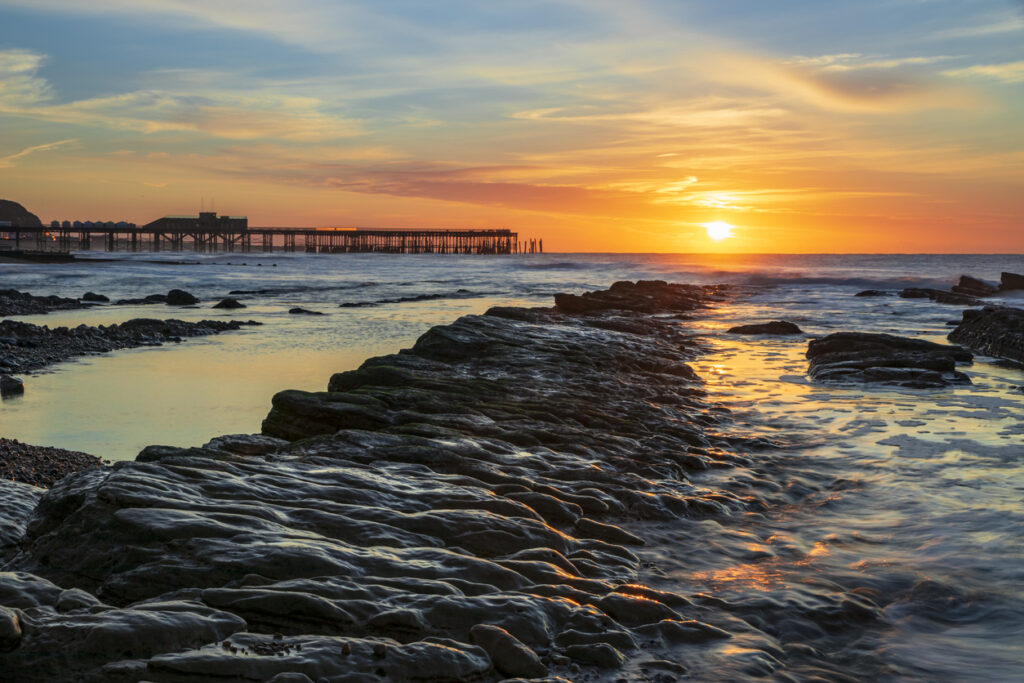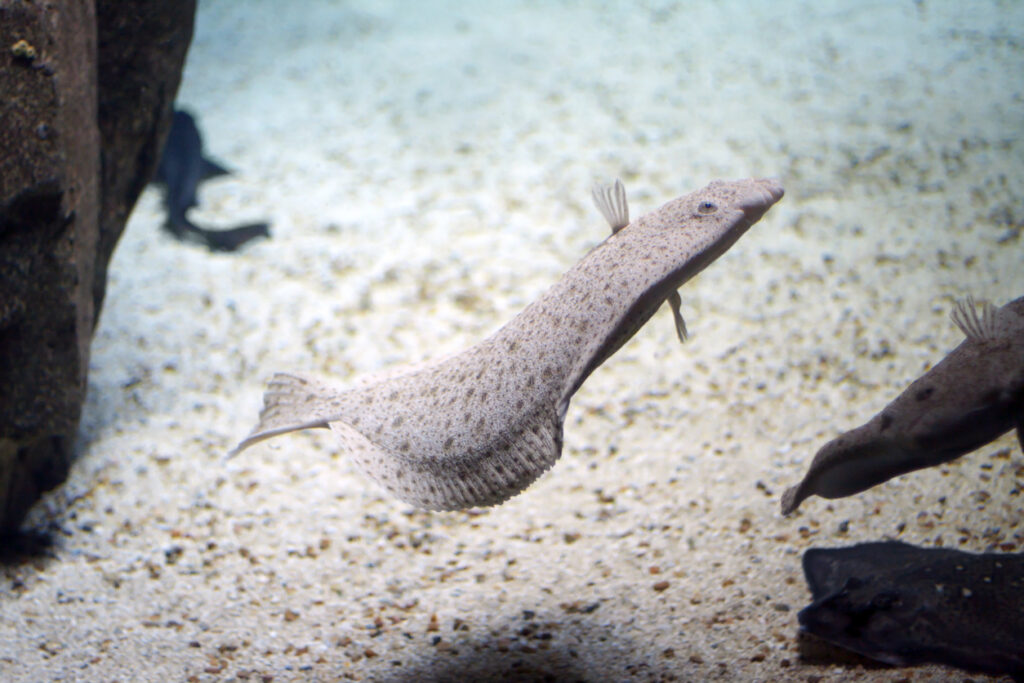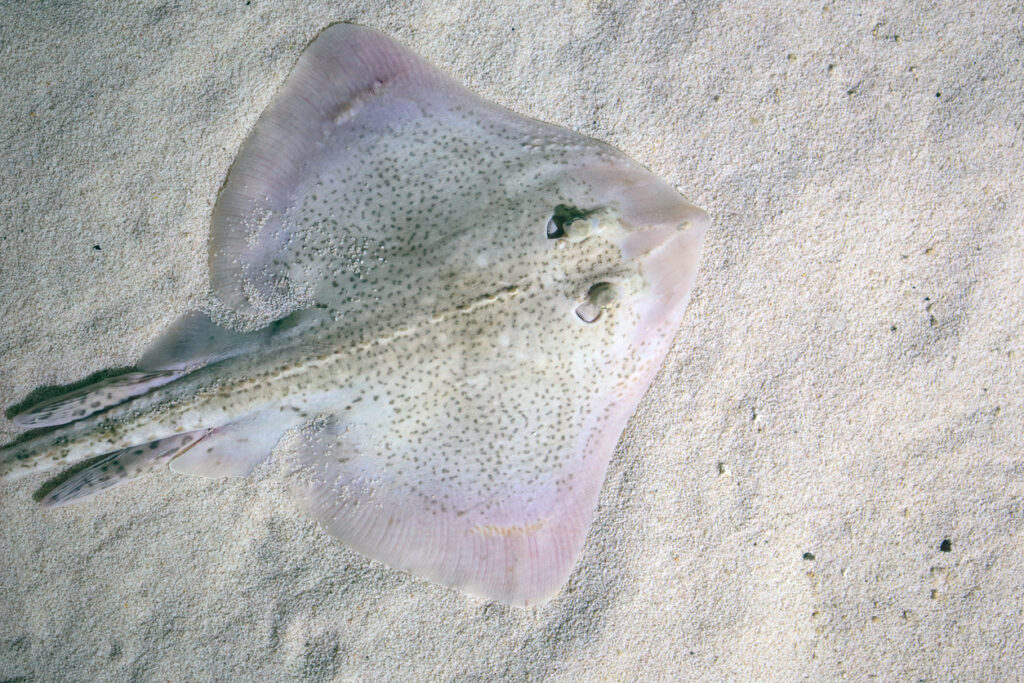Here at Hastings Aquarium, we’re in a very fortunate position. Not only are our wonderful exhibits brimming with rare, colourful and exotic species, but we’re a mere hop, skip and jump away from the English Channel – where a whole host of native and migratory creatures can be found.
And that got us thinking: which marine animals are you most likely to encounter off the coast of Hastings? And what can our aquarium guests expect during a visit to our town’s beautiful beachfront?
To find out, we’re taking a look at the coast of Hastings and the creatures that can be found here.
What’s the coast of Hastings like?
Sun, sea, sand and a nice dollop of heritage combine on the coast of Hastings, making it the perfect destination for swimmers, day-trippers and history buffs alike. The town’s beach is easily one of the most coveted stretches of sand in southeast England, while historic intrigue comes in the form of visible dinosaur footprints at the base of the beach’s towering sandstone cliffs, as well the area’s close ties to the momentous events of 1066.
Of course, one of the most distinctive features of the Hastings coast is the town’s beautiful Victorian pier, first erected in 1872. Although much of the original pier was sadly destroyed by a fire in 2010, it reopened in 2016 and continues to prove a popular spot for enjoying sweeping views of the Channel and beyond.

Climate and sea conditions on the Hastings coast
Since Hastings lies at the heart of what is probably one of the sunniest regions of the UK, summer sea conditions here are prime for a whole host of migratory species. The beach itself lies in a relatively sheltered position, with the sandstone beds of the Weald forming steep cliffs to the east of the town and contributing to its warm, temperate climate.
Can you swim at Hastings Beach?
You can swim at Hastings Beach but only in the safe zone between the red and yellow flags. This is a designated space that local coast and lifeguard teams have deemed the safest for bathing, with a reduced risk of rip tides and a nice distance away from the town’s active fishing vessels, which land directly on the beach.
What creatures live in Hastings’ waters?
A mix of native and migratory species pass through the waters of the English Channel season after season. Let’s dive in and take a look at some of the species you’re likely to encounter beneath the waves of the Hastings coast.
Flatfish

Some of the most commonly seen creatures off the coast of Hastings belong to the flatfish family (Pleuronectiformes), which are known for being ray-finned and for having both eyes on one side of their heads. These include Dover sole (Solea solea), olive flounder (Paralichthys olivaceus), dabs (Pleuronectidae), turbot (Scophthalmus maximus), and Atlantic halibut (Hippoglossus hippoglossus).
Flatfish are generally bottom-dwellers, meaning that they spend much of their lives – including catching prey and breeding – on the seafloor. This explains why they’ve evolved to have asymmetric heads with both eyes on the same side; it makes it much easier to spot both predators and prey from the seafloor.
The shallow and sandy conditions of the English Channel are perfect for flatfish species, with spring and summer seeing the largest concentration of such animals in Hastings’ waters.
Thornback rays

You can see thornback rays (Raja clavata) at Hastings Aquarium, but there’s also a possibility of catching a glimpse of these majestic creatures out in the Channel, too.
That’s right, thornbacks are a common sight off the Hastings Coast in the summer months, although their impressive camouflage will make them very difficult to spot! In fact, thornbacks blend almost seamlessly into the sandy, muddy and gravelly seabed of the Channel, so they’re adept at evading both predators and prey.
Smooth-hound sharks

The prospect of sharing a swim with a shark in the English Channel might be enough to keep you out of the water, but rest assured that the smooth-hound shark (Mustelus) is no man-eater by any stretch of the imagination.
Growing to an average length of 1.5 metres, this small shark species has become a common sight in UK waters in recent years and is regularly spotted off the coast of Hastings, particularly in late spring and early summer. This is one of the oldest species of fish in English waters, with the smooth-hound classified as a prehistoric cartilaginous fish.
Whether you’re paying a trip to our aquarium or making a splash down at the beach (or both!), Hastings is a mecca for marine life, with lots of unique species on offer. To plan your visit to Hasting Aquarium, book your tickets or get in touch with our helpful team today.
